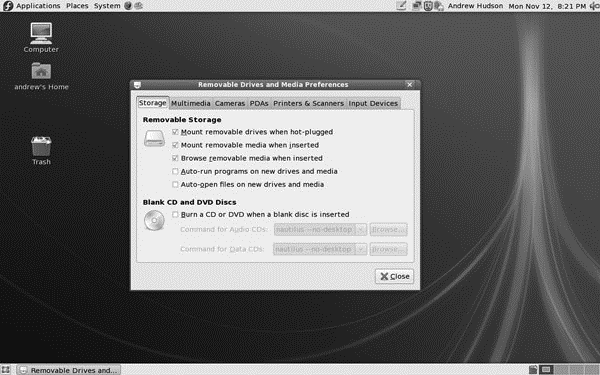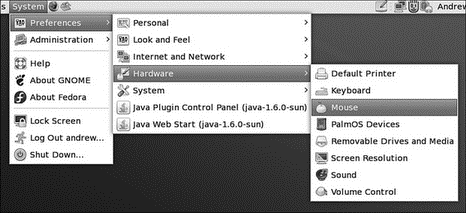Книга: Fedora™ Unleashed, 2008 edition
The GNOME Desktop Environment
The GNOME Desktop Environment
A desktop environment for X provides one or more window managers and a suite of clients that conform to a standard graphical interface, based on a common set of software libraries. When they are used to develop associated clients, these libraries provide graphical consistency for the client windows, menus, buttons, and other onscreen components, along with some common keyboard controls and client dialogs. The following sections discuss the primary desktop environment that is included with Fedora: GNOME.
The GNOME project, which was started in 1997, is the brainchild of programmer whiz Miguel de Icaza. GNOME provides a complete set of software libraries and clients. GNOME depends on a window manager that is GNOME-aware. This means that to provide a graphical desktop with GNOME elements, the window manager must be written to recognize and use GNOME. Some compliant window managers that are GNOME-aware include Havoc Pennington's metacity (the default GNOME window manager), Enlightenment, Compiz, Window Maker, and IceWM.
Fedora uses GNOME's user-friendly suite of clients to provide a consistent and user- friendly desktop. GNOME is a staple feature of Red Hat Enterprise Linux distribution and Fedora because Red Hat actively supports its development. GNOME clients are found under the /usr/bin directory, and GNOME configuration files are stored under the /etc/GNOME and /usr/share/GNOME directories, with user settings stored in the home directory under .GNOME and GNOME2.
A representative GNOME desktop, running the removable media preferences tool used for setting actions to events, is shown in Figure 3.1.

FIGURE 3.1 Fedora's GNOME desktop uses the metacity window manager and offers a selection of GNOME themes.
You can configure your desktop in various ways and by using different menu items under the Preferences menu, which can be found as part of the main Desktop menu. With the myriad configuration options, you can tailor every aspect of your system's look and feel. Figure 3.2 shows a selection of the Preferences options available to you.

FIGURE 3.2 You can customize your Fedora desktop by using the Preferences settings that are available in the System, Preferences menu.
- CHAPTER 3 Working with GNOME
- KDE — The Other Environment
- 5.3 mikroC Integrated Development Environment (IDE)
- Environment Options
- 4.4.4 The Dispatcher
- About the author
- Chapter 7. The state machine
- Appendix E. Other resources and links
- Example NAT machine in theory
- The final stage of our NAT machine
- Compiling the user-land applications
- The conntrack entries




